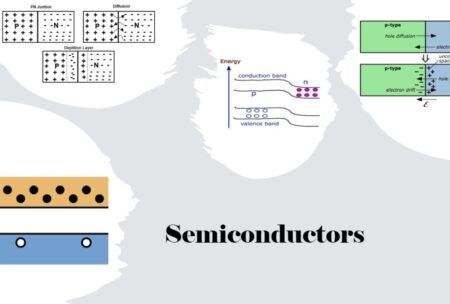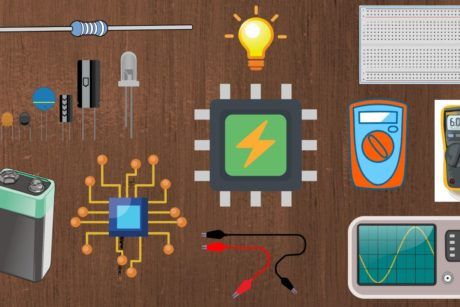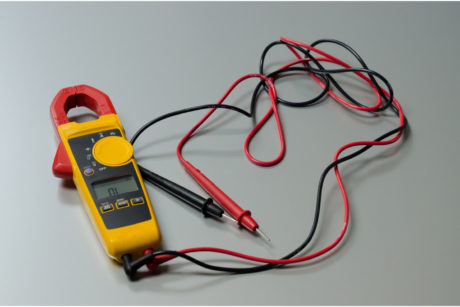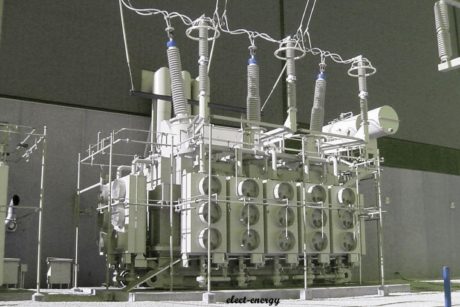Learn the basics of semiconductors and its real world application in Electronics, Instrumentation, and Biomedical Engineering. Read more.
Meet Swarit Mahalsekar, the Biomedical engineer who has made it his mission to share his knowledge and skills in electronics with the world. As an experienced online instructor on multiple platforms, Swarit has helped countless students master the art of electronics. But that's not all – Swarit's passion for teaching led him to found "Practical Buddy," a platform dedicated to providing students with practical, hands-on experience in electronics. With his extensive background in completing e
Access all courses in our library for only $9/month with All Access Pass
Get Started with All Access PassBuy Only This CourseAbout This Course
Who this course is for:
- Anyone who wants to learn semiconductors in depth
- Beginner who wants to start their career in electronics
- Beginner who wants to perceive their career in VLSI domain
What you’ll learn:
- All the basic concepts of semiconductors
- Semiconductors will help you understand how electronic devices like diodes, transistors, etc work
- Concept of Energy, Valence and Conduction band diagrams
- Understand the internal structure of diodes
- Intrinsic and extrinsic semiconductors
- Clears the basic concepts of electronic devices (EDC)
Requirements:
- Should have basic idea about conductors
- Basic idea of chemistry like atoms, shell, sub-shell, electrons, etc.
In this course, you will learn about semiconductors from scratch. Below, I had listed topics the course would cover. There are also topics not listed below but are covered because they are required to proceed further:
- Introduction to semiconductors
- Difference between conductors, semiconductors, and an insulators
- Energy band diagram for sodium and silicon atoms
- Valence band and Conduction band diagram for sodium and silicon atoms
- Forbidden Energy Gap
- Intrinsic and Extrinsic Semiconductors
- Internal structure or internal working of the p-n junction diode (Application part)
This is course 2 of a series and this course is a prerequisite to the next course which deals with diode circuits, Bjt, Fet’s circuits, etc. So, to understand the core electronics part or how any electronic device behaves, you should be very much well acquainted with the part of the semiconductor.
Our Promise to You
By the end of this course, you will have learned the basic concepts of semiconductors.
10 Day Money Back Guarantee. If you are unsatisfied for any reason, simply contact us and we’ll give you a full refund. No questions asked.
Get started today!
Course Curriculum
| Section 1 - Introduction | |||
| Brief Introduction | 00:00:00 | ||
| Section 2 - Introduction To Semiconductors | |||
| Introduction To The Basics Of Semiconductors | 00:00:00 | ||
| Section 3 - Semiconductors, Conductors And Insulators | |||
| Difference Between Conductors, Insulators And An Insulators W.R.T Conductivity | 00:00:00 | ||
| Section 4 - Energy Band | |||
| Bohr’s Law | 00:00:00 | ||
| Energy Band Diagram For Single Atom Placed In A Crystal | 00:00:00 | ||
| Concept Of Shell And Sub-Shells In An Atom | 00:00:00 | ||
| Energy Band Diagram Of ‘N’ Sodium Atoms Present In The Sodium Crystal | 00:00:00 | ||
| Section 5 - Concept Of Valence Band And Conduction Band And Energy Band Of Silicon | |||
| Brief Introduction To Valence And Conduction Band Of Sodium Atom | 00:00:00 | ||
| Energy Band Diagram Of Silicon Part 1 | 00:00:00 | ||
| Energy Band Diagram Of Silicon Part 2 | 00:00:00 | ||
| Modified Definition Of Valence And Conduction Band | 00:00:00 | ||
| Difference Between Conductors, Semiconductors, Insulators W.R.T Of Energy Band | 00:00:00 | ||
| Section 6 - Intrinsic Semiconductors | |||
| Introduction To Intrinsic Semiconductors | 00:00:00 | ||
| Concept Of Electrons And Holes | 00:00:00 | ||
| Formation Of Current And Energy Band Diagram Of Intrinsic Semiconductors | 00:00:00 | ||
| Section 7 - Extrinsic Semiconductors | |||
| Introduction To Extrinsic Semiconductors | 00:00:00 | ||
| Types Of Extrinsic Semiconductors | 00:00:00 | ||
| N-Type Extrinsic Semiconductor | 00:00:00 | ||
| P-Type Extrinsic Semiconductors | 00:00:00 | ||
| Section 8 - P-N Junction Diode | |||
| Internal Structure And Working Of PN Junction Diode | 00:00:00 | ||
| Simulation Of Basic Diode Circuit On The Thinkercad Software | 00:00:00 | ||
About This Course
Who this course is for:
- Anyone who wants to learn semiconductors in depth
- Beginner who wants to start their career in electronics
- Beginner who wants to perceive their career in VLSI domain
What you’ll learn:
- All the basic concepts of semiconductors
- Semiconductors will help you understand how electronic devices like diodes, transistors, etc work
- Concept of Energy, Valence and Conduction band diagrams
- Understand the internal structure of diodes
- Intrinsic and extrinsic semiconductors
- Clears the basic concepts of electronic devices (EDC)
Requirements:
- Should have basic idea about conductors
- Basic idea of chemistry like atoms, shell, sub-shell, electrons, etc.
In this course, you will learn about semiconductors from scratch. Below, I had listed topics the course would cover. There are also topics not listed below but are covered because they are required to proceed further:
- Introduction to semiconductors
- Difference between conductors, semiconductors, and an insulators
- Energy band diagram for sodium and silicon atoms
- Valence band and Conduction band diagram for sodium and silicon atoms
- Forbidden Energy Gap
- Intrinsic and Extrinsic Semiconductors
- Internal structure or internal working of the p-n junction diode (Application part)
This is course 2 of a series and this course is a prerequisite to the next course which deals with diode circuits, Bjt, Fet’s circuits, etc. So, to understand the core electronics part or how any electronic device behaves, you should be very much well acquainted with the part of the semiconductor.
Our Promise to You
By the end of this course, you will have learned the basic concepts of semiconductors.
10 Day Money Back Guarantee. If you are unsatisfied for any reason, simply contact us and we’ll give you a full refund. No questions asked.
Get started today!
Course Curriculum
| Section 1 - Introduction | |||
| Brief Introduction | 00:00:00 | ||
| Section 2 - Introduction To Semiconductors | |||
| Introduction To The Basics Of Semiconductors | 00:00:00 | ||
| Section 3 - Semiconductors, Conductors And Insulators | |||
| Difference Between Conductors, Insulators And An Insulators W.R.T Conductivity | 00:00:00 | ||
| Section 4 - Energy Band | |||
| Bohr’s Law | 00:00:00 | ||
| Energy Band Diagram For Single Atom Placed In A Crystal | 00:00:00 | ||
| Concept Of Shell And Sub-Shells In An Atom | 00:00:00 | ||
| Energy Band Diagram Of ‘N’ Sodium Atoms Present In The Sodium Crystal | 00:00:00 | ||
| Section 5 - Concept Of Valence Band And Conduction Band And Energy Band Of Silicon | |||
| Brief Introduction To Valence And Conduction Band Of Sodium Atom | 00:00:00 | ||
| Energy Band Diagram Of Silicon Part 1 | 00:00:00 | ||
| Energy Band Diagram Of Silicon Part 2 | 00:00:00 | ||
| Modified Definition Of Valence And Conduction Band | 00:00:00 | ||
| Difference Between Conductors, Semiconductors, Insulators W.R.T Of Energy Band | 00:00:00 | ||
| Section 6 - Intrinsic Semiconductors | |||
| Introduction To Intrinsic Semiconductors | 00:00:00 | ||
| Concept Of Electrons And Holes | 00:00:00 | ||
| Formation Of Current And Energy Band Diagram Of Intrinsic Semiconductors | 00:00:00 | ||
| Section 7 - Extrinsic Semiconductors | |||
| Introduction To Extrinsic Semiconductors | 00:00:00 | ||
| Types Of Extrinsic Semiconductors | 00:00:00 | ||
| N-Type Extrinsic Semiconductor | 00:00:00 | ||
| P-Type Extrinsic Semiconductors | 00:00:00 | ||
| Section 8 - P-N Junction Diode | |||
| Internal Structure And Working Of PN Junction Diode | 00:00:00 | ||
| Simulation Of Basic Diode Circuit On The Thinkercad Software | 00:00:00 | ||



